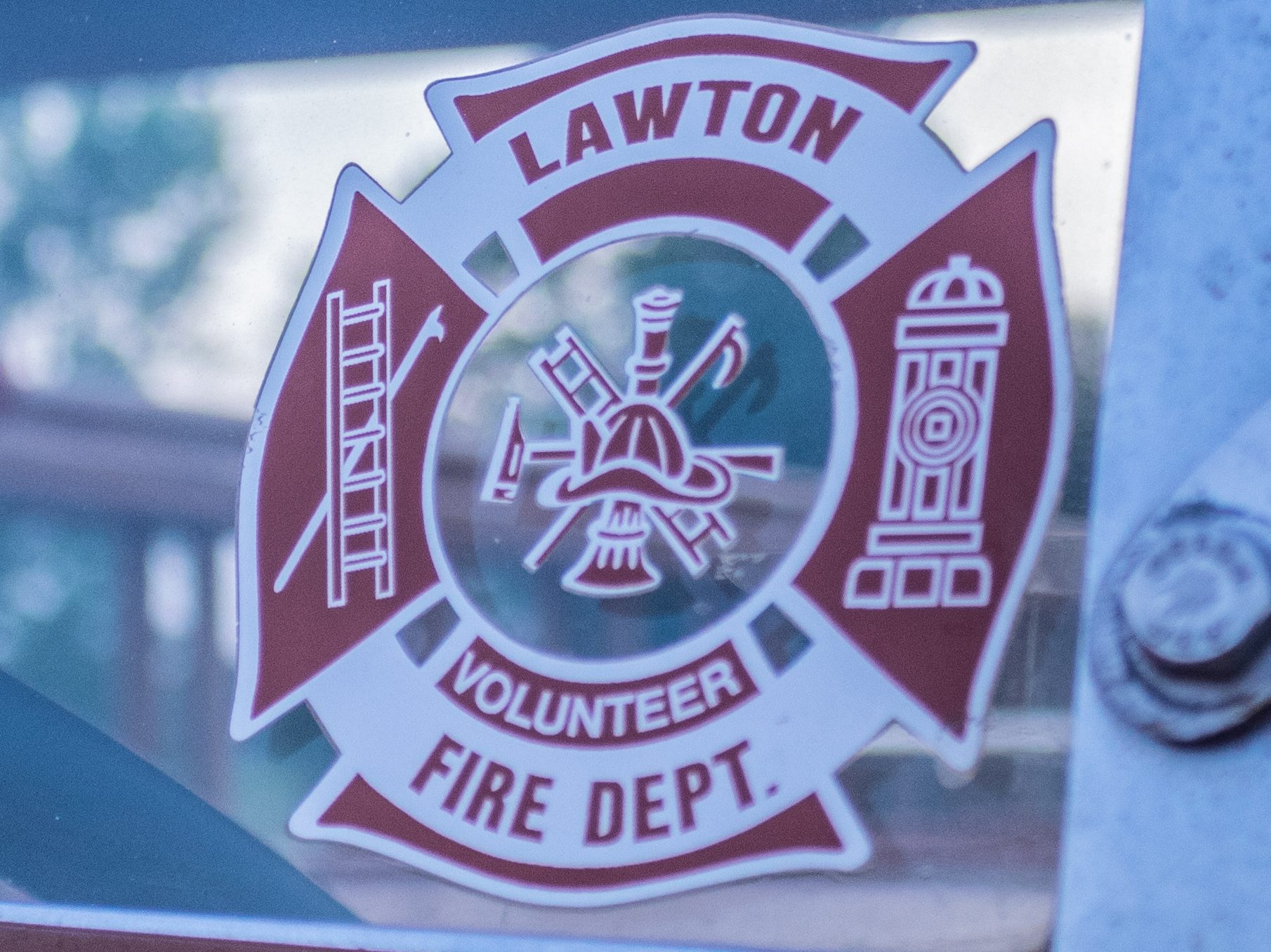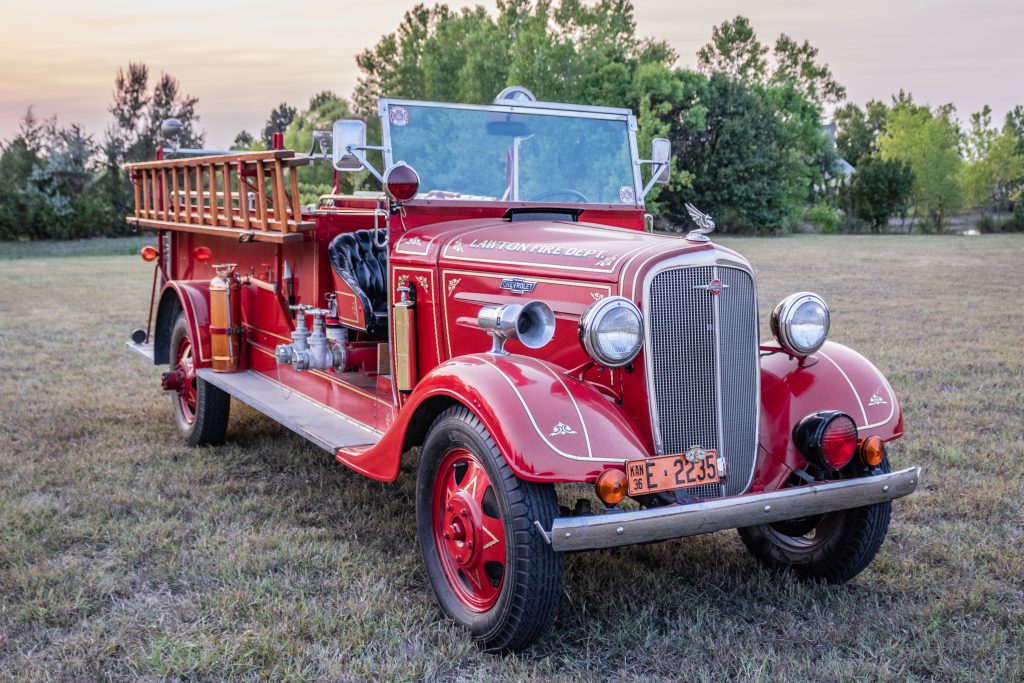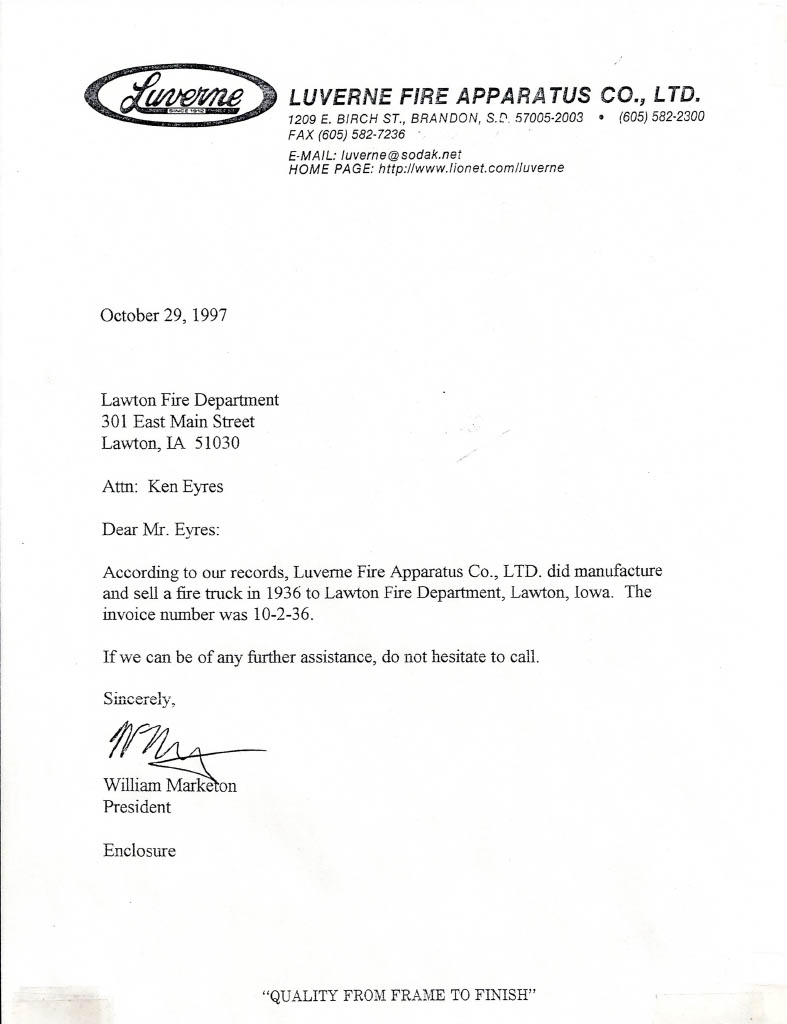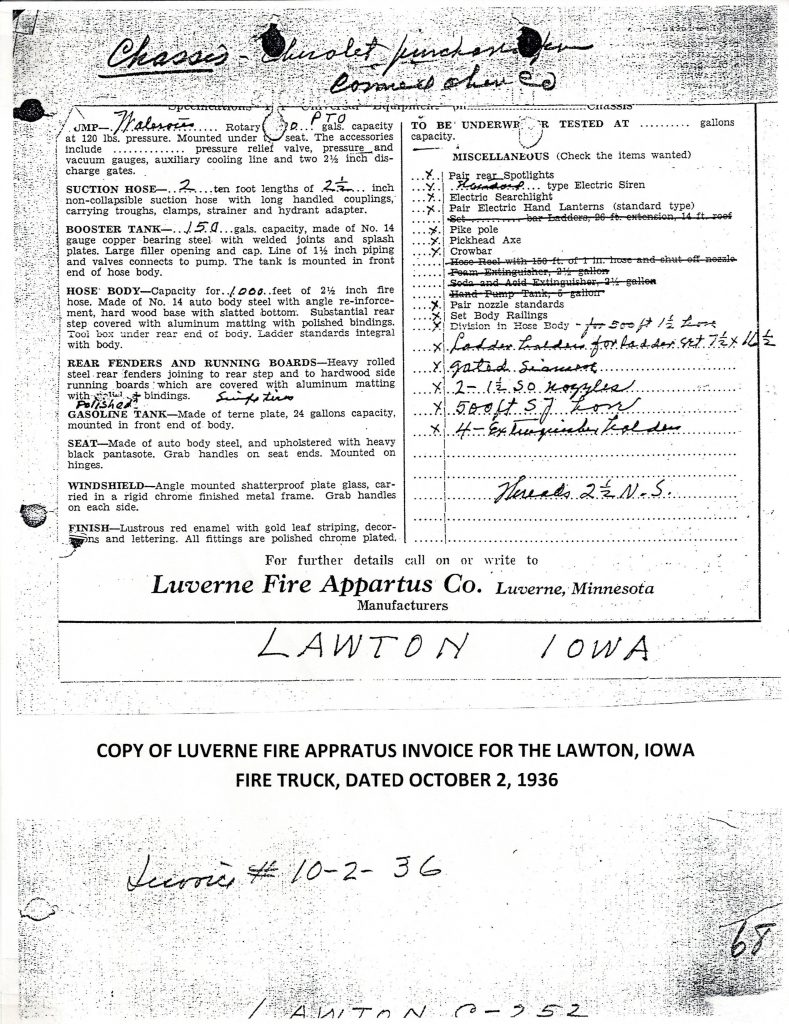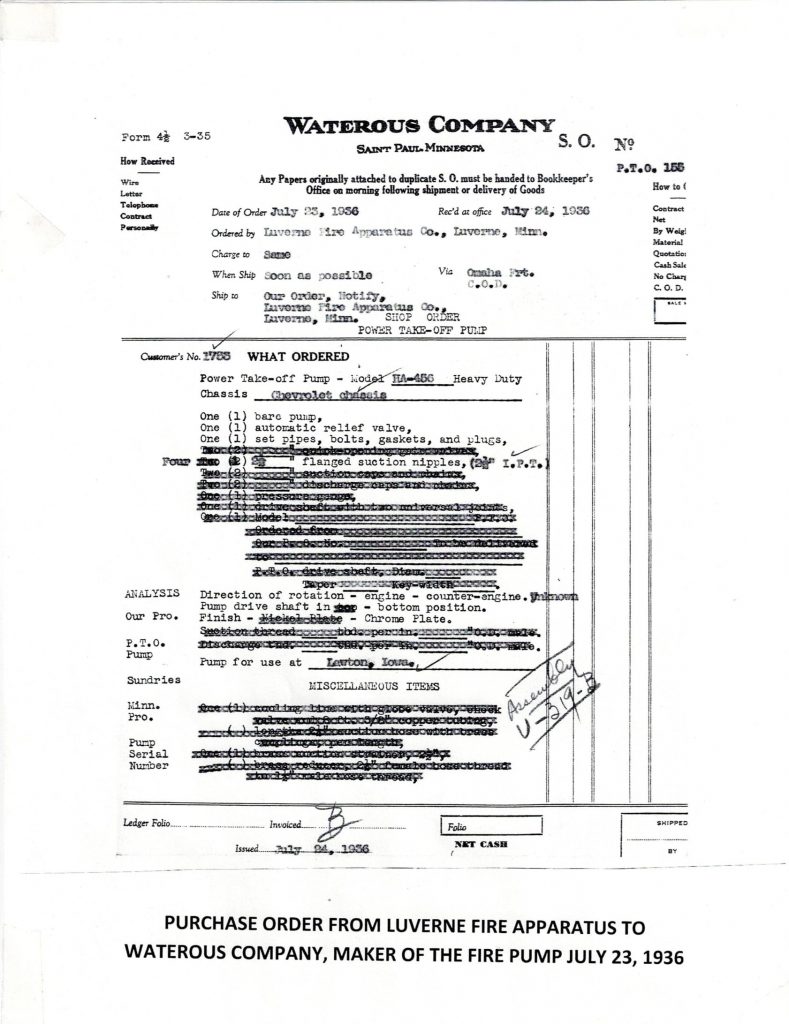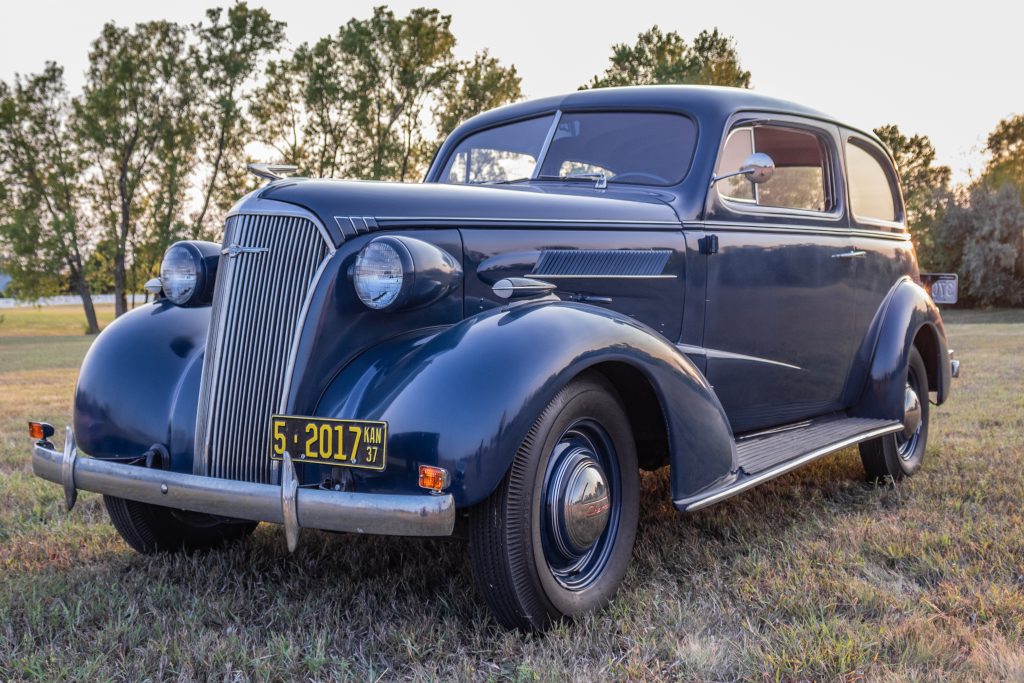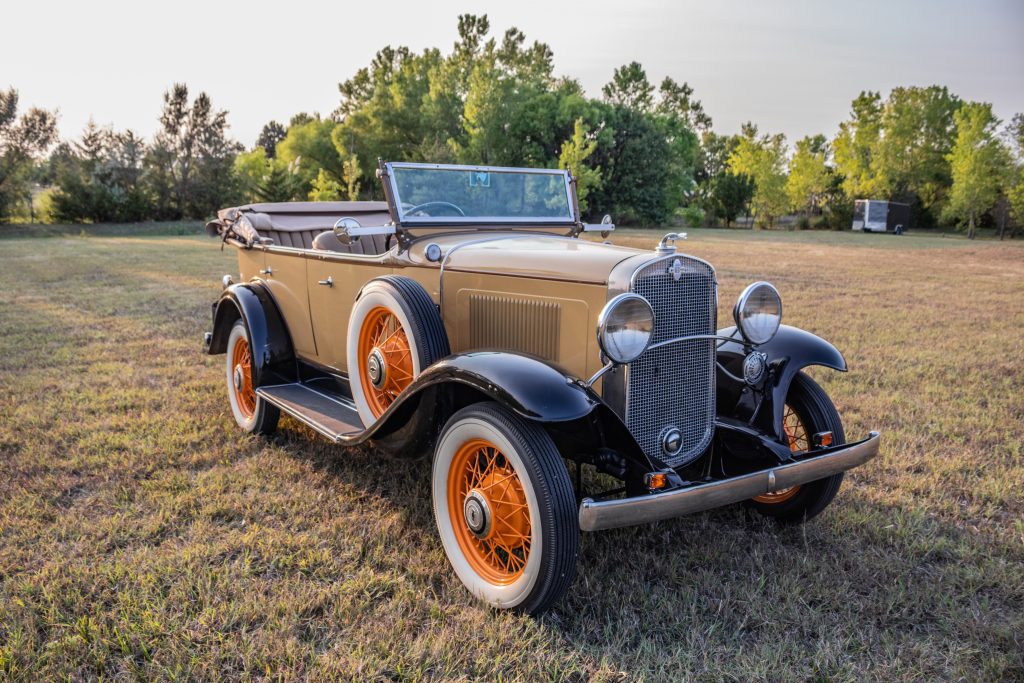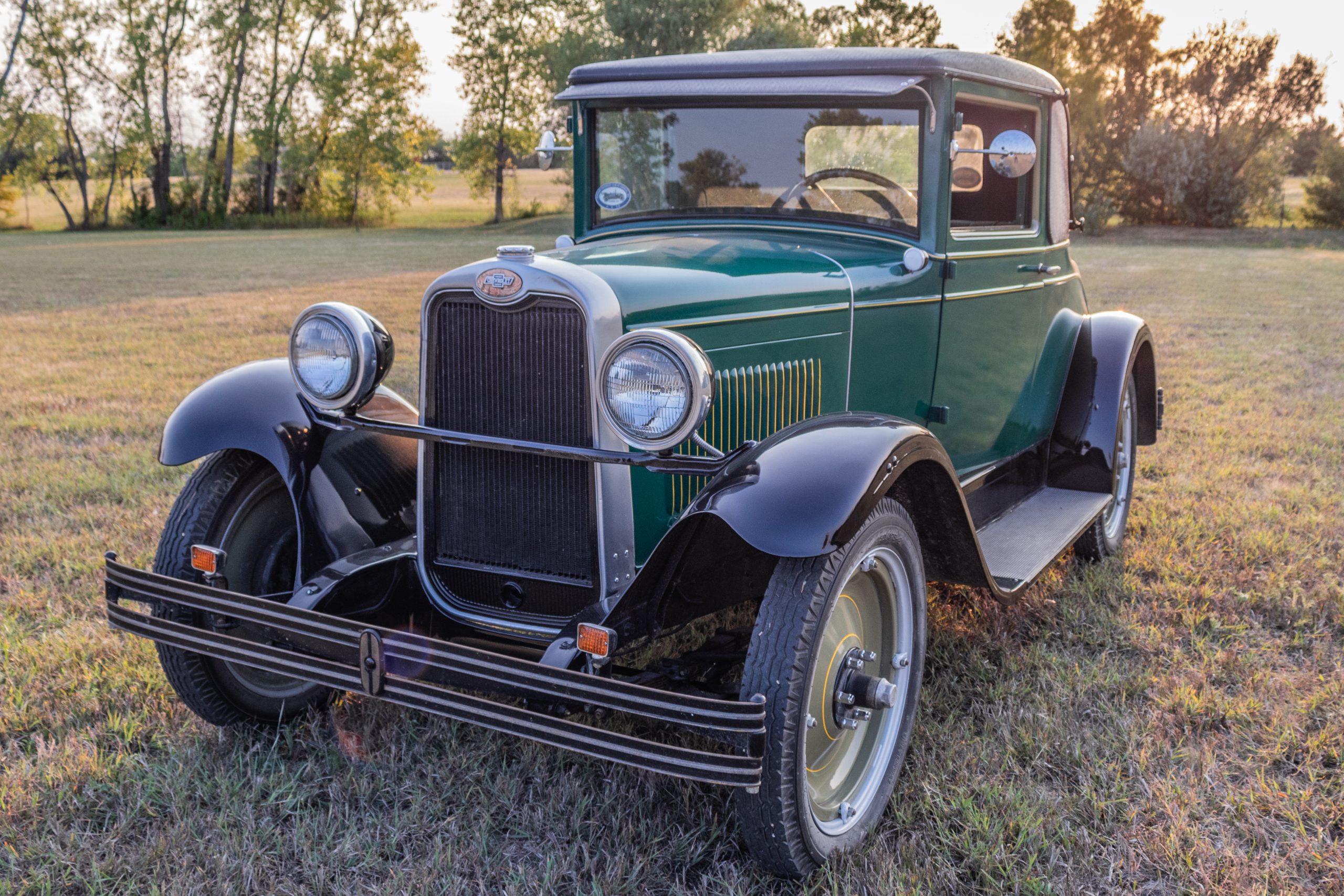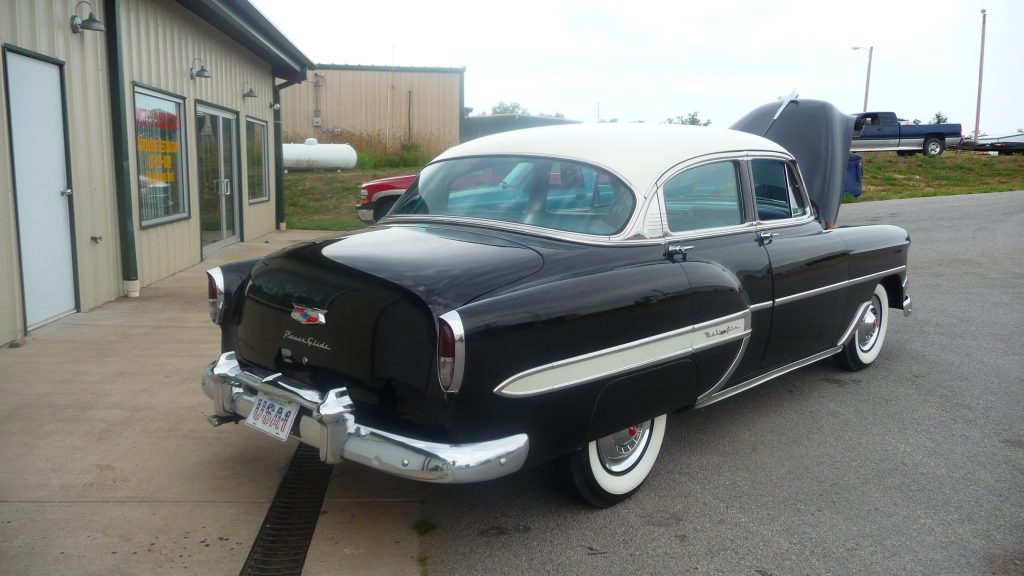
SPECIFICATIONS
ENGINE:
Cylinders: 6 Cylinders overhead valve
Bore/Stroke: 3 9/16 X 3 15/16
Displacement: 235 Cubic Inches (3.8 Liter)
Compression Ratio: 7.5:1
Horsepower: 115 @ 3700 RPM
DRIVE LINE:
Transmission: Automatic Power Glide
Rear end gear ratio: 3.54: 1
Tire size: 6.70 x 15
BRAKES
4-wheel Bendix Hydraulic
GASOLINE TANK CAPACITY
14 Gallons
PRODUCTION:
Total Chevrolets Produced 1954: 1,138,921
Total 1954 Chevrolet Bel Aire 4 Door Production: 248,750
PRICE:
Cost of 1954 Chevrolet Bel Air in 1954 Dollars: $ 2,154
Cost of 1954 Chevrolet Bel Air in 2022 Dollars: $23,715
A FEW 1954 EVENTS
Dwight D. Eisenhower is President of The United States, 1953 to 1961.
1 January: NBC makes the first coast-to-coast NTSC Color television known as color broadcast when it telecast the Tournament of Roses Parade, with public demonstrations given across the United States on prototype color receivers.
14 January: The Hudson Motor Car Company merges with Nash-Kelvinator Corporation forming the American Motors Corporation.
21 January: he first nuclear marine propulsion nuclear-powered submarine, the USS Nautilus SSN-571 6, is Ship naming and launching launched in Groton, Connecticut by Mamie Eisenhower, the First Lady of the United States.
10 February: President of the United States called President Dwight Eisenhower warns against United States intervention in Vietnam.
15 February: Canada and the United States agree to construct the Distant Early Warning Line, a system of radar stations in the far northern Arctic regions of Canada and Alaska
23 February: The first mass inoculation of children against Poliomyelitis or polio with the Jonas Salk named Salk vaccine begins in Pittsburgh.
28 February: The first color television sets using the NTSC standard are offered for sale to the general public.
1 April: President of the United States, Dwight D. Eisenhower, authorizes the creation of the United States Air Force Academy in Colorado.
6 May: Roger Bannister becomes the first person to run the mile in under four minutes.
17 May: The United States Supreme Court hands down a unanimous decision in ‘Brown v. Board of Education of Topeka, Kansas’.
14 June: U.S. President Dwight D. Eisenhower signs a bill into law that places the words “under God” into the United States Pledge of Allegiance.
15 July: First flight of the Boeing 367-80, prototype for both the Boeing 707 and Boeing C-135 Stratolifter called C-135 series.
18 October: Texas Instruments announces the first Transistor radio.
2 December: The United States Senate votes 65 to 22 to censure Joseph McCarthy for “conduct that tends to bring the Senate into dishonor and disrepute”.
4 December: The first Burger King is opened in Miami, Florida.
COMMENTS
The Chevrolet Bel Air is a full-size car produced by Chevrolet for the 1950–1975 model years. Initially, only the two-door hardtops in the Chevrolet model range were designated with the Bel Air name from 1950 to 1952. With the 1953 model year, the Bel Air name was changed from a designation for a unique body shape to a premium level of trim applied across a number of body styles. The Bel Air continued with various other trim level designations, and it went from a mid-level trim car to a budget fleet sedan when U.S. production ceased in 1975. Production continued in Canada, for its home market only, through the 1981 model year.
The Chevrolet Bel Air, especially its third-generation design, has been considered an icon of the 1950s. It is named after the wealthy Bel Air neighborhood on the Westside of Los Angeles. Well-maintained and preserved examples are highly sought after by car collectors and enthusiasts.
First-year production reached only 76,662 models built. The car cost $1,741 and weighed 3,225 lb (1,463 kg). Front suspension was independent, named “knee-action.” The first Bel Airs of this era shared only their front sheet metal ahead of the A pillar with the rest of the range. The windshield, doors, glass, and trunk were common with the Styleline Deluxe Convertible Coupe; however, the roof, rear quarters and rear windows (3) were unique. The chassis and mechanicals were common with the rest of the passenger car range, and the overall appearance was the same as the rest of the range, except that the roofline was lower and the unique three-piece rear window gave it a longer and more balanced look. The first Bel Airs were available with only the “Deluxe” premium trim level and specification.
Apart from the usual annual grille and trim changes, the 1951–1952 Bel Air differed from the earlier 1950 model with the introduction of the higher and squarer rear guards that were across the whole range.
In 1953 Chevrolet renamed its series, and the Bel Air name was applied to the premium model range. Two lower series, the 150 and 210, also emerged (as successors to the Special and Deluxe series, respectively). The 1953 Chevrolet was advertised as “Entirely new through and through” due to the restyled body panels, front and rear ends. However, essentially these Chevrolets had similar frames and mechanicals to the 1949–1952 cars.
The Bel Air was given a facelift in 1953. The pre-war technology, such as torque tube drive, six-cylinder splash feed engines, knee-action suspension, and split windshields of the early models, was phased out, and the foundations for the first post-war modern Chevrolet passenger car were finalized. The Bel Air series featured a wide chrome strip of molding from the rear fender bulge to the rear bumper. The inside of this stripe was painted a coordinating color with the outside body color, and “Bel Air” scripts were added inside the strip. Lesser models had no model designation anywhere on the car, having only a Chevrolet crest on the hood and trunk. 1953 was the first year for a curved, one-piece windshield.
In the July 1953 issue of Popular Mechanics, a tested 1953 Bel Air went from 0-60 mph in 19.6 seconds.
Bel Air interiors had an optional massive expanse of chrome across the lower part of the dashboard (most were painted), along with a deluxe Bel Air steering wheel with a full chrome horn ring. Carpeting and full wheel covers rounded out Bel Air standard equipment. For 1954, the Bel Air stayed essentially the same, except for a revised grille and taillights and a revised engine that had insert bearings and higher oil pressure, needed for the full-flow oil filtration system that was not available prior to 1954. Prior to 1954, the 235 and 216 cubic inch six-cylinder engines had Babbitt bearings and scoops to create oil pressure at the bottom of each rod, and the oil pressure was standard at 15-30 PSI. During these years, there were three engine choices, depending on the transmission ordered. Both 235 cubic inch engines were “Blue Flame” inline six-cylinder OHV engines, featuring hydraulic valve lifters (in 1953 with automatic transmissions) and aluminum pistons. The 106 hp 235 cubic inch displacement engine was standard on stick shift models, with solid lifters and splash plus pressure lubrication, including Babbitt bearings. Powerglide cars got a 115 hp version which had hydraulic lifters and full pressure lubrication.
In 1953 and 1954, Bel Airs could be ordered as a convertible, hardtop coupe, two- and four-door variant sedan, and, for 1954, the Beauville station wagon, which featured woodgrain trim around the side windows. Many new options, once only seen in more expensive luxury cars, were offered, starting in 1953. This included power steering and the Guidematic headlight dimmer in 1953, as well as power brakes, power 2-way front seat and power front windows in 1954. All 1954 models equipped with the standard transmission used the 1953 Powerglide engine.
MY HISTORY WITH THE CAR
We saw the car advertised for sale in one of the 2012 issues of G & D, the Vintage Chevrolet Club of America monthly magazine. When I called and visited with the owner, I was told the car had only a bit over 16,000 miles from new. While that sounded to me like it would be more likely to be 116,000 miles, I was assured the car had spent most of its life in a museum in New Hampshire. After some thought, we decided to drive to Branson, Missouri where the car was located and look it over. Given the distance of around three-hundred miles and our enjoyment of the Branson shows, we took the truck and trailer figuring if it was not what we wanted, we would spend a few days in Branson and drive home with an empty trailer.
It didn’t take very long to understand that the car actually had the advertised 16,000 miles, although having sat with minimal driving for over fifty years, there were some issues. The car was a Bel Air model, with most all the options available that year, including power steering and power brakes. While the power steering appeared to work properly, the power brakes required more pressure than manual brakes! It had the original tires included, although the seller had installed new tires but offered to include the original U S Royal 6.70 X 15 tires with the car. After some haggling, we settled on a price and loaded the car on the trailer. After a few shows in Branson, we picked up the trailer and bought our new prize home.
I drove the car a few miles but just as anticipated, it had some issues which had to be addressed before we could begin to think of driving it on a tour. The engine and power glide transmission leaked oil from nearly every gasket. I did some checking and found a transmission shop in Smileyberg, Kansas who still worked on Power Glides. After investigating the process for removing the transmission and discovering the significant weight of same, I thought better of attempting the removal and replacement myself. After some discussion, we arrived at a satisfactory deal for both of us. I would take the car to his shop in my enclosed trailer. He would remove both the engine and transmission, put the car back in the trailer and I would bring the engine home for a re-seal job.
Ironically, on my way to deliver the car and trailer to his shop, the transmission on my tow vehicle gave out. I was able to limp it in to the transmission shop, so left both the tow vehicle and trailer as well as the 54 Chevy. After rebuilding the transmission in my Dodge Diesel truck, he removed the engine and power glide from the 54 and called me. I picked up the truck and engine and returned home.
I dismantled the engine completely and found it to be in great shape, with the exception of the leaking gaskets, further reinforcing the 16,000 miles. However; the rear main seal had rusted to the crankshaft and upon starting after many years, it chewed the rear seal to pieces. In addition, it became obvious that a valve had stuck solid and broke a rocker arm, which had later been welded. But the most amazing thing I found was a red shop towel in the oil pan! There was no way that could have happened after the engine was assembled, and there was significant evidence the engine had never been apart, so it had to have been assembled at the factory with the rag in the oil pan.
I had the crankshaft polished and since it was apart, I installed new main and rod bearings, as well as piston rings. Upon disassembling the valves from the cylinder head, it was obvious that several of them had rusted badly, so I had new exhaust valves and all new seats installed. I found a good rocker arm to replace the welded arm and reassembled the engine. I delivered it to the transmission shop and a few days later they called me to say it was ready to come home. He did advise me that while the engine was running, it didn’t run very well. I suspected the cause and told him not to worry about it.
Arriving home, I tore the carburetor down and found it had fine rust in the float bowl. I removed the gas tank and found it had considerable amount of rust inside. I performed my normal cure for a rusty gas tank, which causes no small amount of teasing by fellow club members, but it does work. I rinse the tank out with soapy water, then fill it about a quarter full with soapy water and add about five pounds of sheet rock screws. Then I strap it to the rear wheel of my tractor which is raised off the ground. I run the tractor as slow as I can idle the engine while the soapy solution and screws tumble inside the tank. After about five minutes, I put the tractor in reverse and repeat the process. After another five minutes, I rotate the tank 90 degrees and do it all over again. I then drain the soapy water and refill with fresh water but this time I only turn it over a few times and drain the water again. Then comes the fun part, getting all those screws out of the tank! It really isn’t that difficult.
After the screws are all accounted for, and that is very easy, all you have to do is listen to see if any more are rattling around. I then put in a gallon of lacquer thinner but this time I only slosh it around by hand. I pour the thinner out into a container using a paint strainer in the funnel. At first there will be considerable contaminate. I put the used thinner back into the tank and repeat the process until the paint strainer shows no more indication of contamination. From there the tank is set in the sun to thoroughly dry. I use Caswell Engineering Epoxy gas tank sealer following the manufacturers recommendation to the letter. To date I have reclaimed over 20 rusty gas tanks with not a single failure.
After doing a thorough cleaning job on the carburetor and blowing out the gas lines, it was time for a test drive. While the transmission and engine was being re-done, I had sent the power brake assembly to a rebuilder so I now had good brakes. It ran perfectly for about three miles then began acting as if it weren’t getting enough gas. I checked the carburetor and found it had rust plugging things up again. OK, so I didn’t get the gas line thoroughly cleaned out, but now it should be fine. Another test drive and same problem. That is when I found that the fuel pump was full of rust, so I just replaced it and problem solved.
I had installed new shocks and rebuilt the brake cylinders as well as changing the grease in the differential. The radiator was cleaned and minor leaks repaired, so we were now ready for a major test run. I am always reluctant to take any freshly restored or major repair job on a tour, so we drove it around town for a few weeks and did some other minor adjustments until we were confident it would be a reliable vehicle. It was now ready for the first major tour. Rather than hauling it to Brookeland, Texas a bit over 600, miles away, we just drove the car and it performed perfectly.
Our initial plan was to install air conditioning in the car and when the weather suggested a closed car with windshield wipers and a heater combined with the air conditioning, we would have an all-weather car. However; since the car had both power brakes and power steering, I would have to make major modifications to fit the compressor, so decided to leave it original.
